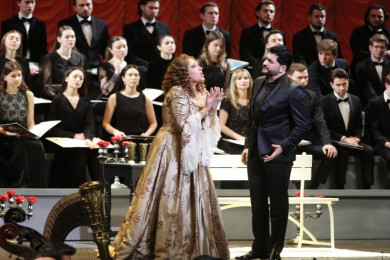 Mariinsky Theatre:
Mariinsky Theatre: 1 Theatre Square St. Petersburg  Mariinsky-2 (New Theatre):
Mariinsky-2 (New Theatre): 34 Dekabristov Street St. Petersburg  Mariinsky Concert Hall:
Mariinsky Concert Hall: 20 Pisareva street St. Petersburg | ||||||
To make an order, please use mobile version of our website - buy tickets from any smartphone


